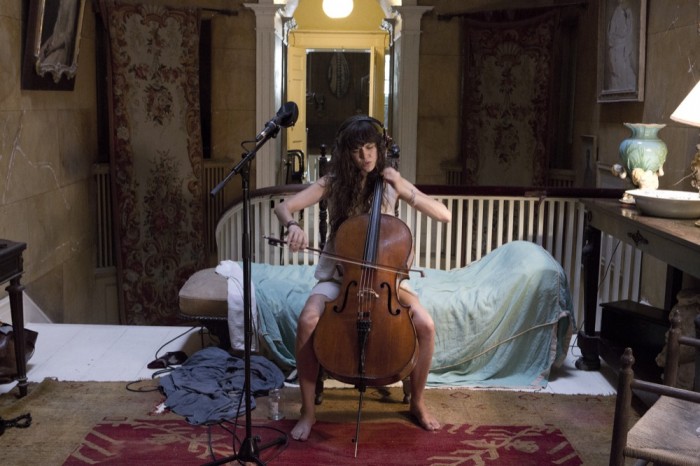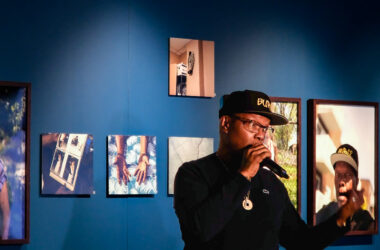In every live performance—be it theatrical, musical, or artistic—there is a sense of immediacy and visceral presence in the interaction between artist and audience. Video can never quite recreate that experience, but, as with Ragnar Kjartansson’s exhibition at the Musée d’art contemporain de Montréal, it can capture an equally powerful act. Kjartansson’s three works stretch the boundaries of experiencing a performance through documentation.
The first room of the exhibition is a display of Kjartansson’s most recent work, “World Light—The Life and Death of an Artist” (2015). A dark room is illuminated by the bluish hue of four centrally-facing screens, each playing different scenes from a filmed drama. The drama in question is Kjartansson’s interpretation of the 1940 Icelandic novel by the same name. It tells the story of a young man on a tumultuous journey to become a poet. The set of each scene is simple and almost amateur in its theatricality, which confuses the work’s categorization between cinema, drama, and video.
Another confusing factor is the blend between theater and reality. At times, a butler character addresses the audience directly, removing himself from his role in the fantasy. At other times, an assistant comes in with a clap board to mark the beginning of a scene, letting the behind-the-scenes world seep into both the audience’s reality and the story’s fantasy. The four screens—simultaneously showing different parts of the same story—and then some instances that aren’t a part of the story at all, create a confusing and at times overwhelming experience. It is hard to get a grasp on what is actually going on, but the impression of the story is perhaps more important than the actual plot. This manipulation of storytelling creates a unique viewing experience and understanding of an essential Icelandic tale.
The second work in the exhibition is another video titled “A Lot of Sorrow” (2013-14), documenting a six-hour performance by The National. The US rock band performed its song “Sorrow” for six hours straight at MoMA PS1, a contemporary art showcase, in New York, with occasional appearances by Kjartansson, who conceived and organized the piece. The song is quite repetitive at the start; to repeat it as a whole an additional 105 times is an incredible exercise of endurance and dedication to the music and the performance. The National sings, “sorrow found me when I was young / Sorrow waited, sorrow won / . . . / I don’t wanna get over you” over and over. The lyrics and music are intensely personal and emotional, yet each repetition expresses the same level of emotional depth and passion. With every repetition there is a dual experience of deepening and refreshing emotions. The sting of sorrow is renewed every time, but at the same time it feels as if these emotions are reconciled as an essential part of love and suffering.
The largest and most impressive work in the exhibition is a video installation made up of ten screens, each showing a musician sequestered in a room of an upstate New York mansion. The musicians cannot see each other, but have headphones with which to hear each other. They proceed to play a piece composed by Kjartansson with words by his ex wife, the artist and poet Ásdís Sif Gunnarsdóttir: “Once again I’ve fallen into my feminine ways,” a phrase that Kjartansson says relates to the process of separation from his wife. Each screen displays an intimate moment with the musician: there is a sense that they are deeply immersed in the creative process, sometimes nude, or in bed, or simply barefoot in a nightgown, and entirely alone in their creative space. The dynamic between the private and the performative is tentative but entirely honest. By performing a private creative process, the artist invites the audience in, and the experience is captivating.
Simultaneous to the intimate experience, there is the aspect of public collaboration. The musicians appear lost in their individuality while sharing in the joy of making music together. In this piece, Kjartanssan beautifully creates an experience that allows non-musicians to share in the magic of making music.
Kjartanssan’s work is all about endurance, passion, and collaboration. His video installations include the audience in the complicated dichotomy of public creation and artistic performance. In these three pieces, artists work together while each individual is highlighted, mirroring the way humans exist and create things in communities while ultimately living in the isolation of our own bodies and minds.









